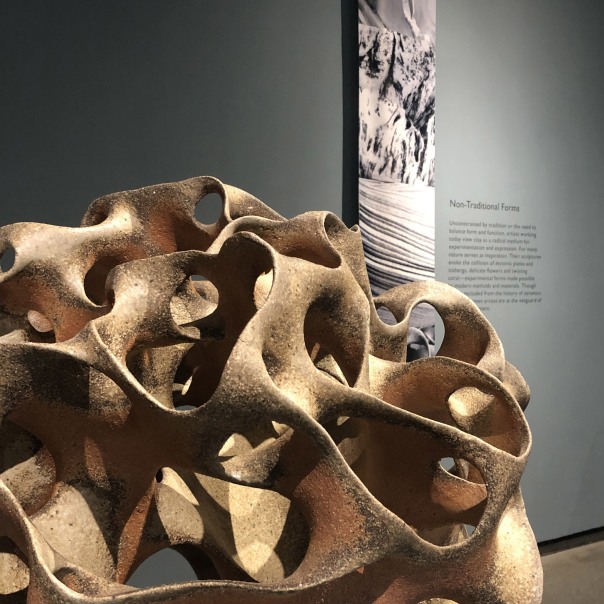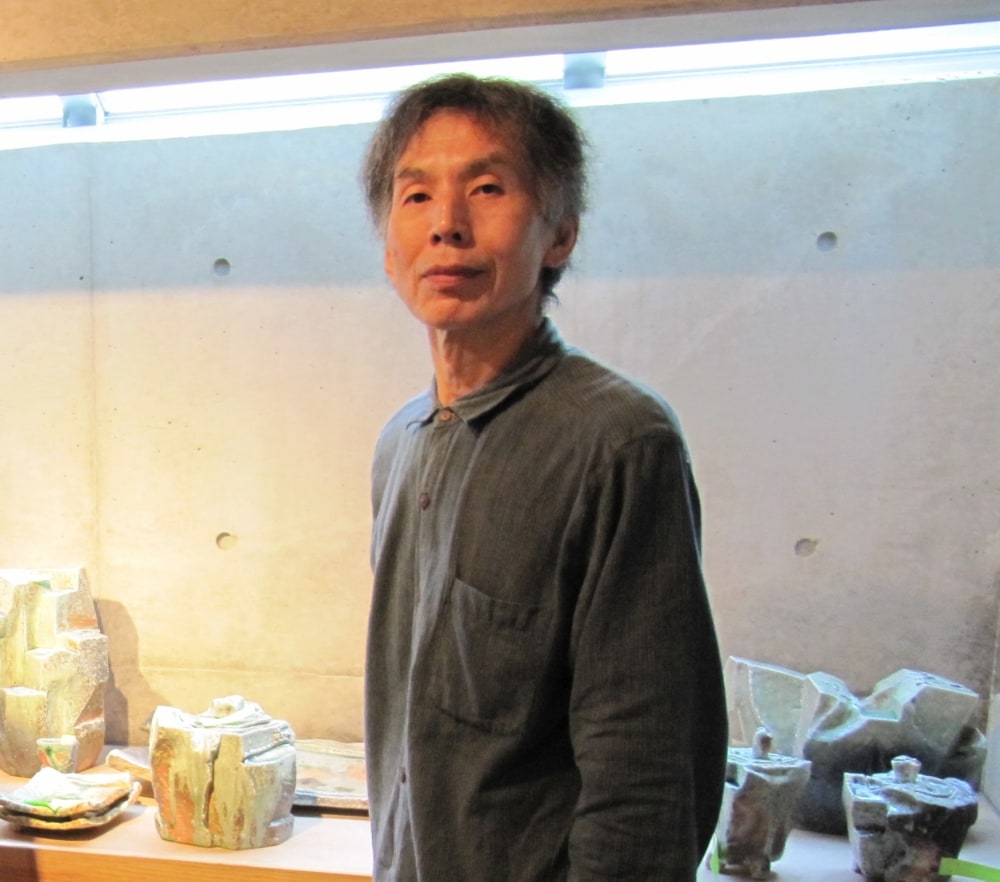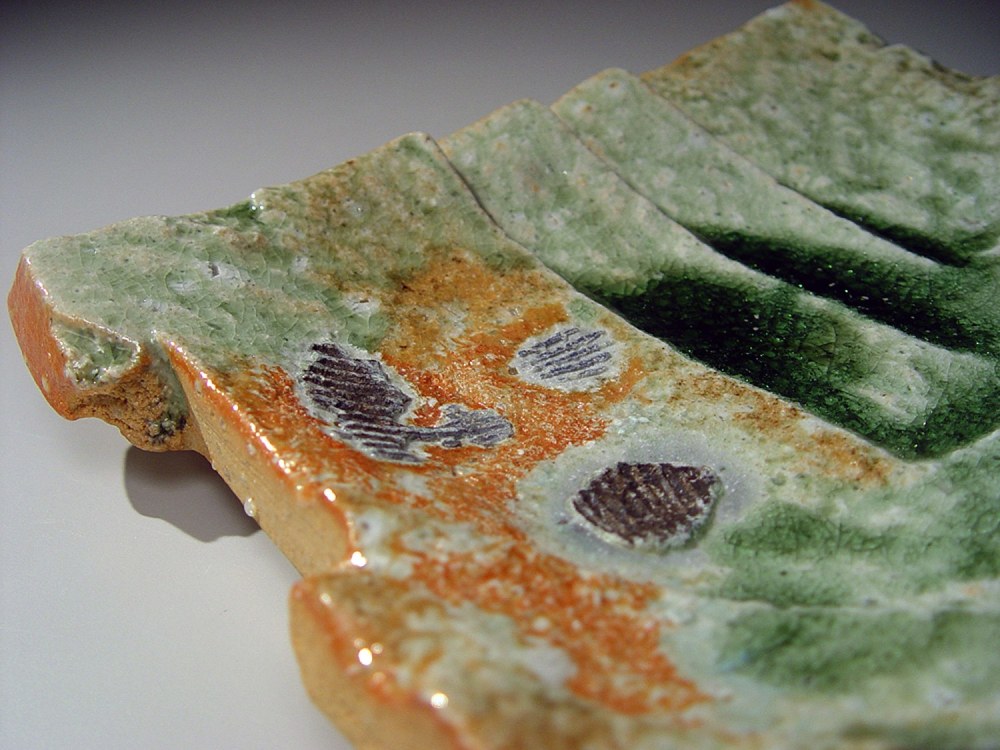


Born 1947, Matsuyama, Ehime Prefecture, Japan
After viewing a celebrated medieval mizusashi, FUJIOKA SHŪHEI chose to pursue Iga-ware pottery. To study this ancient technique, he apprenticed with the only practitioner of Iga ware in the 1970s, Kosei Tanimoto (b. 1916). While Fujioka eventually separated himself from his master’s traditional forms, producing designs of a more bold and vigorous nature, his ceramics still exhibit mittsu no keshiki, or the three landscapes: biddoro (from Portuguese vidro for glass), accumulations of ash that become molten and turn to glass, often referred to as dragonfly eye; hi-iro, emphasizing the natural quality and color of the clay; and koge, burned areas of the clay from firing. Such characteristics can only be achieved through the risky process of natural wood firing for over three days. With much attrition during such a rigorous process, those works that ultimately do survive manifest the beautiful effects on the local clay that emerges from the extreme heat of the kiln. Fujioka has mastered the delicate dance between tradition and modernity in his sculptural flower vessels and stepped water jars, each covered in rich emerald green, natural ash glaze.